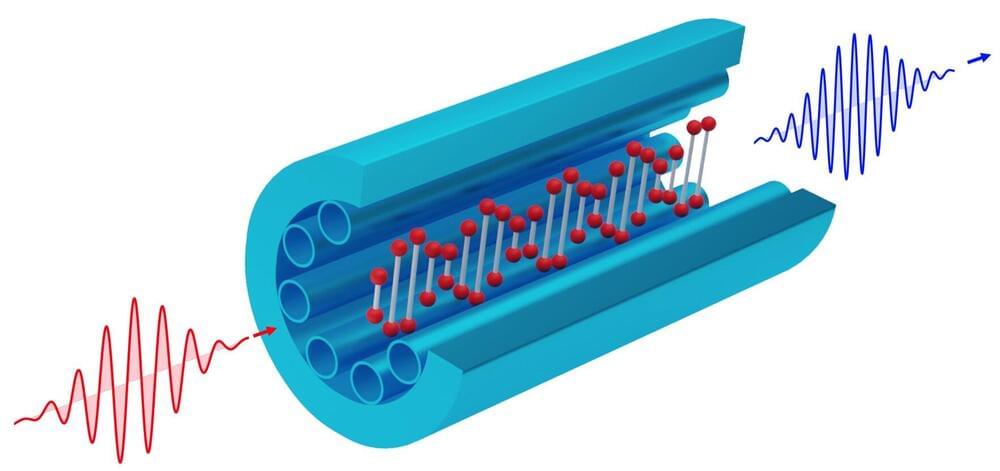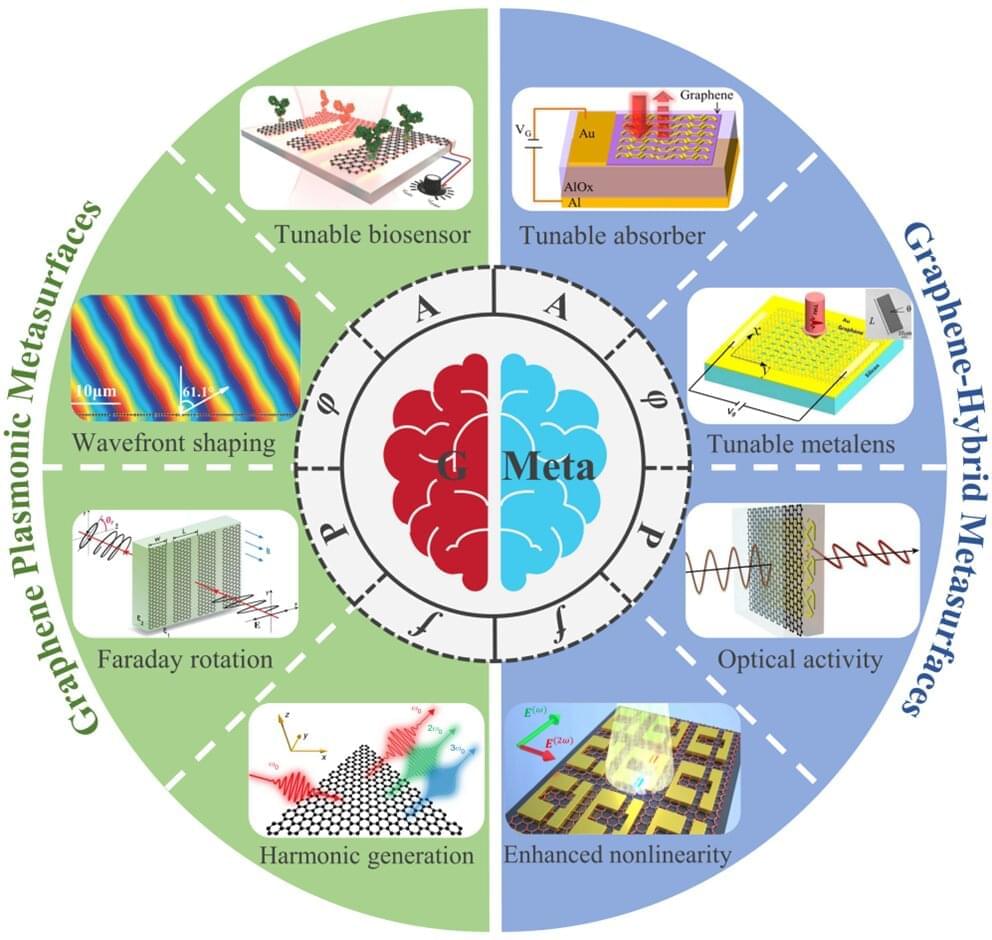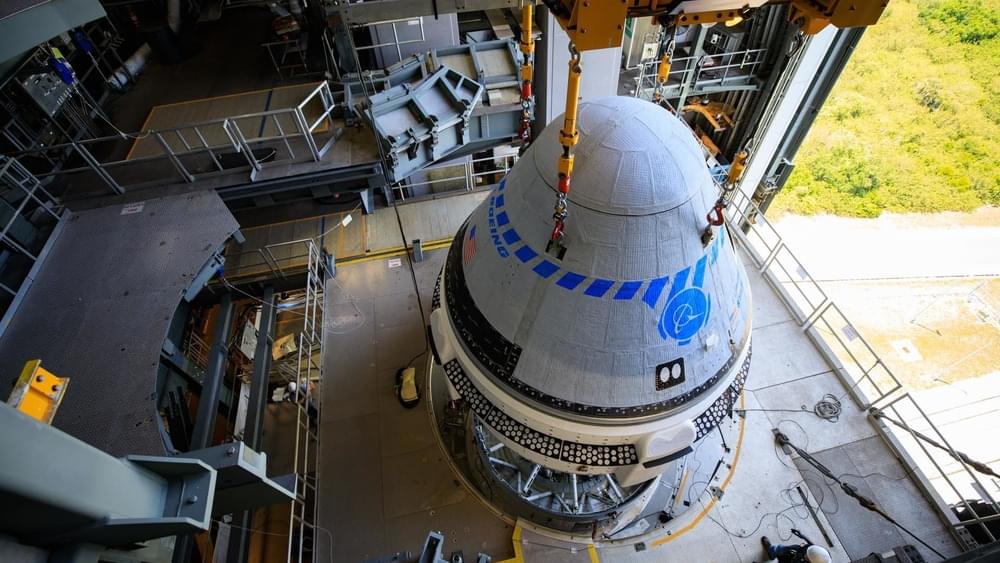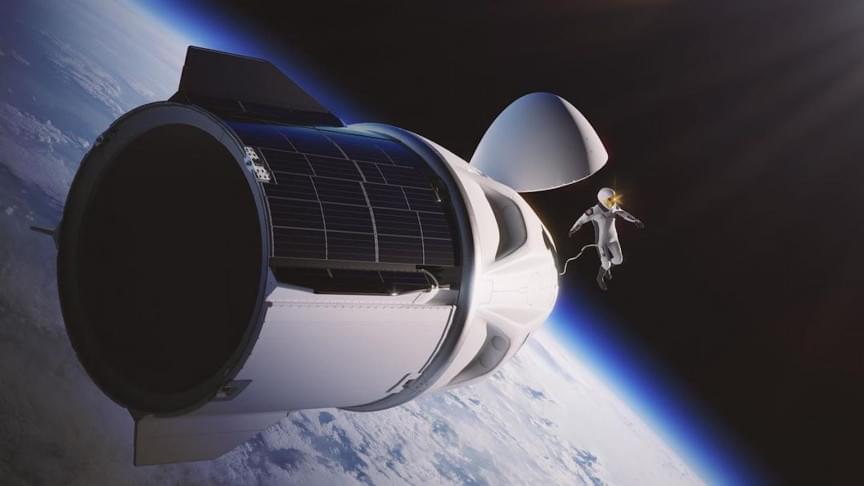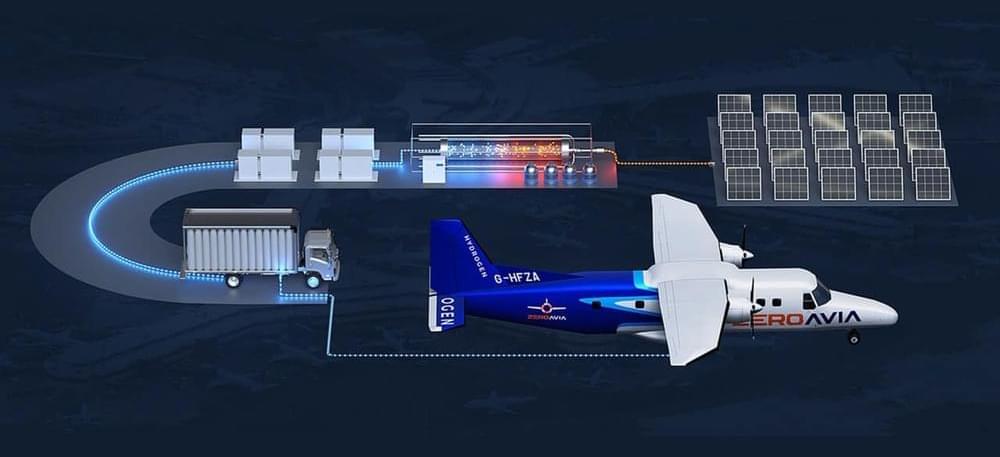May 13, 2022
A step forward in modern quantum technology: Frequency conversion of single photons at arbitrary wavelengths
Posted by Dan Breeden in categories: holograms, quantum physics
Quanta of light—photons—form the basis of quantum key distribution in modern cryptographic networks. Before the huge potential of quantum technology is fully realized, however, several challenges remain. A solution to one of these has now been found.
In a paper published in the journal Science, teams led by David Novoa, Nicolas Joly and Philip Russell report a breakthrough in frequency up-conversion of single photons, based on a hollow-core photonic crystal fiber (PCF) filled with hydrogen gas. First a spatio-temporal hologram of molecular vibrations is created in the gas by stimulated Raman scattering. This hologram is then used for highly efficient, correlation-preserving frequency conversion of single photons. The system operates at a pressure-tuneable wavelength, making it potentially interesting for quantum communications, where efficient sources of indistinguishable single-photons are unavailable at wavelengths compatible with existing fiber networks.
The approach combines quantum optics, gas-based nonlinear optics, hollow-core PCF, and the physics of molecular vibrations to form an efficient tool that can operate in any spectral band from the ultraviolet to the mid-infrared—an ultra-broad working range inaccessible to existing technologies. The findings may be used to develop fiber-based tools in technologies such as quantum communications, and quantum-enhanced imaging.
